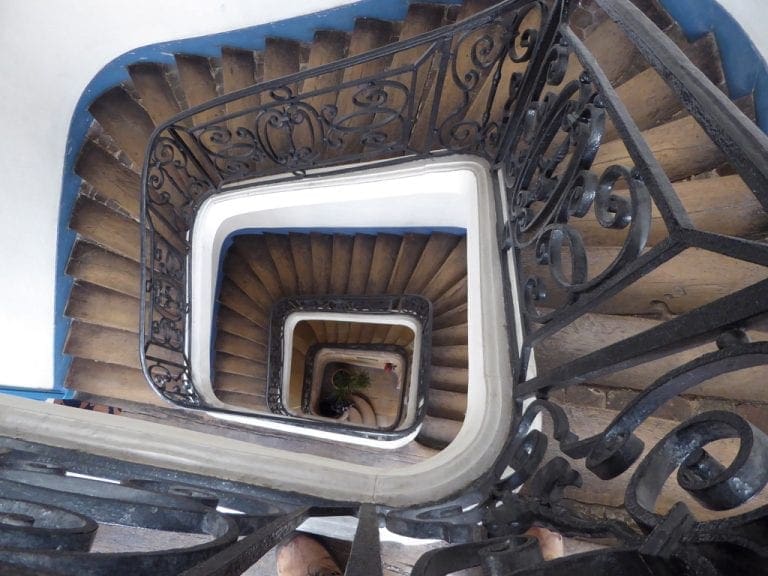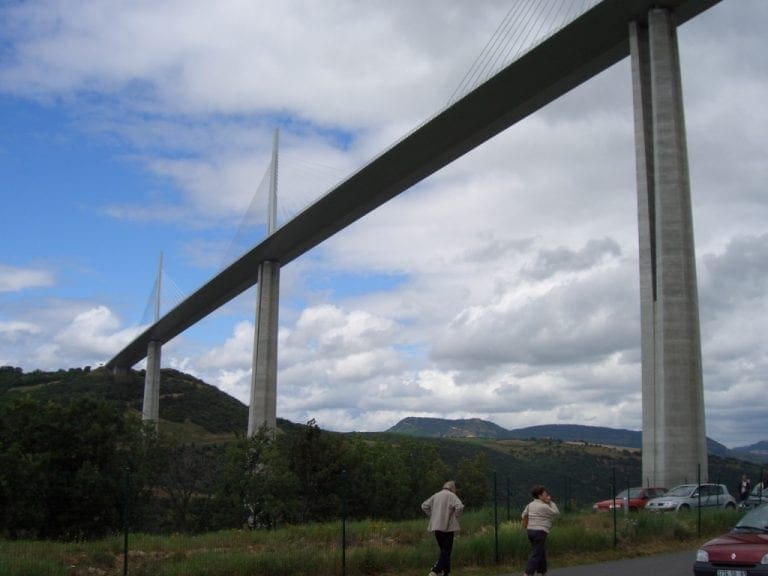Europe Trip 2018 – week 5 Crich Derbyshire
 |
| Essentially Danish to NE English to SW |
Monday 28 May 2018. Day 28. Drive from Frodsham (in Cheshire and old England) to Crich (in Derbyshire and therefore in Danelaw). We have left old England and entered old Danelaw. For about 300 years, this eastern side of Britain was owned by Denmark and spoke Danish – it is from here that we get so many Danish words in English.
 |
| Two graves from 1866 plague Dad and daughter died 2 months apart Mum survived. |
Because it is Bank Holiday weekend, the motorways around Manchester were empty and the backroads of the Peak District of Derbyshire full. We first aimed at the ‘plague village’ of Eyam (pronounced ‘eem’). Called the ‘plague village’ because in 1665 when plague struck the village, the villagers chose to quarantine the village (no one in or out) for the duration – which turned out to be 14 months. Only 83 survived out of a population of 350. We walked to the boundary stone at the edge of the parish where money was left in vinegar filled holes, in exchange for food. At the time, villagers thought vinegar would prevent passing on the plague. The village now makes its living from tourists. Well-dressing was a common attraction with many people walking and cycling, and the roads into Bakewell were blocked with cars. Not far beyond Bakewell, we accidentally veered right instead of left at a junction and were then directed onto a set of very windy, narrow lanes (along with a few other cars) to get back onto track. SatNav error #1.
Our cottage in Crich (pronounced Krytch) is excellent (another HomeAway). As well as lead mining, in early 1800s, Crich would have been a big ‘servo’ at a road hub servicing passing traffic with 15 inns and a tollway. In 1841, George Stephenson (of Rocket fame) built a railway here in his later years, and canals went in to service the nearby Derwent Valley. Crich has now become what the English call a ‘dormitory village’ – people who live here work elsewhere – as far away as London. Yes, London is just a 1½ hour train commute. Sheffield, Leeds, Nottingham as well. People are very friendly here and with a lower population density the roads are not quite so horrendous.
Tuesday 29 May 2018. Day 29. One branch of Helen’s ancestors (blacksmiths and innkeepers) left here when the railways and canals took away their businesses which had been based on looking after passing trade at the Crich ‘servo’. We spent the morning in the local church graveyard taking photos and transcriptions of headstones.
|
My YouTube Video.
First half is weaving and I concentrated on the shuttle; second half is a Spinning Mule.
This factory, originally for spinning had 90 metres of Mules and 300 looms. |
 |
| The Devil – a fearsome machine for pulling apart a bale of cotton & delivering it in a flat sheet of constant thickness. Don’t fall in – it kills. |
Wednesday 30 May 2018. Day 30. Sir Richard Arkwright’s Masson Mill built in 1783 on the Derwent River to make use of the stronger and consistent water flow of the Derwent than his previous mill on a tributary of the Derwent. Arkwright was not so much an inventor as someone who knew how to string inventions together to make money. This was primarily a spinning mill, initially powered by one waterwheel then by two, and later (after a flood wrecked the waterwheel) by water and steam turbines. We prowled around the museum for an hour before the machinery demonstrations at 11am. First, a weaving demo of the Lancashire Loom and the Yorkshire Loom working and information about the Jacquard Looms with their punch cards and 4,800 independent warp ends that took 2 men 2 weeks to thread.
 |
| Doubling machine makes 2ply |
Then, a demo of the Spinning Mule’s workings and description of carding – which step by step delivers consistently aligned fibres in ever thinner wads – eventually tissue thin which is formed into a 1 cm think fluffy ‘cord’. Spinning consists of two main steps – ‘drawing out’ and ‘twisting’ fibres and then winding that length of twisted thread onto a bobbin or prin. The Spinning Mule does those two steps one after the other – first drawing out and twisting while it comes towards you in my video above and then winding on while it goes away – producing a single, strong twisted thread. Imaging two rows of these machines 90 metres long.
 |
| 200,000 bobbins in this factory. 20 million in nearby Oldham |
Winding on starts from the bottom of the prin/bobbin and, so that the thread will later come off easily without breakage, a small 2-3cm cone of thread gradually moves up the prin. Invention of the Spinning Mule and this method of winding by Richard Roberts was yet another significant breakthrough for the ‘industrial revolution’. A parallel room is full of ‘doubling machines’ which take bobbins of single threads and twist them together to make the 2 ply that was used for weaving. Mainly cotton weaving here, although they also had machines to spin and deal with uneven length fibres – goat, cashmere, horse hair (used in the Jacquard Looms), vicuna. This link will take you the the Museum’s YouTube video of weaving. The Masson Mills timeline is also interesting.
A rainy day today. We have not had many. In these industrial towns of the midlands, rain makes a dreary day. Especially as the cloud seems to hang around the tops of the houses.
Thursday 31 May 2018. Day 31. Today, we went on the Birdswood powered boat along a canal parallel to the Derwent. A boat ride on a narrow boat with little to no commentary – all round disappointing. We’ve been talking about tourism in England. Except for London, mostly, we see local tourists, very few foreigners. We know that in Australia and New Zealand, there are local committees trying to encourage tourists ‘stay another day’. The poms have not thought of that yet. Yes, London and the Cotswolds are crawling with tourists. For the rest, I think there are two types of attraction offered: a landed gentry’s house needs a new roof, so tickets of admission are offered to see part of the great pile; a local group of volunteers has managed to get an ancient steam engine/canal boat to work and decides to sell tickets. Nothing coordinated and no real industry based around tourism.
Friday 1 June 2018. Day 32. Day off.














